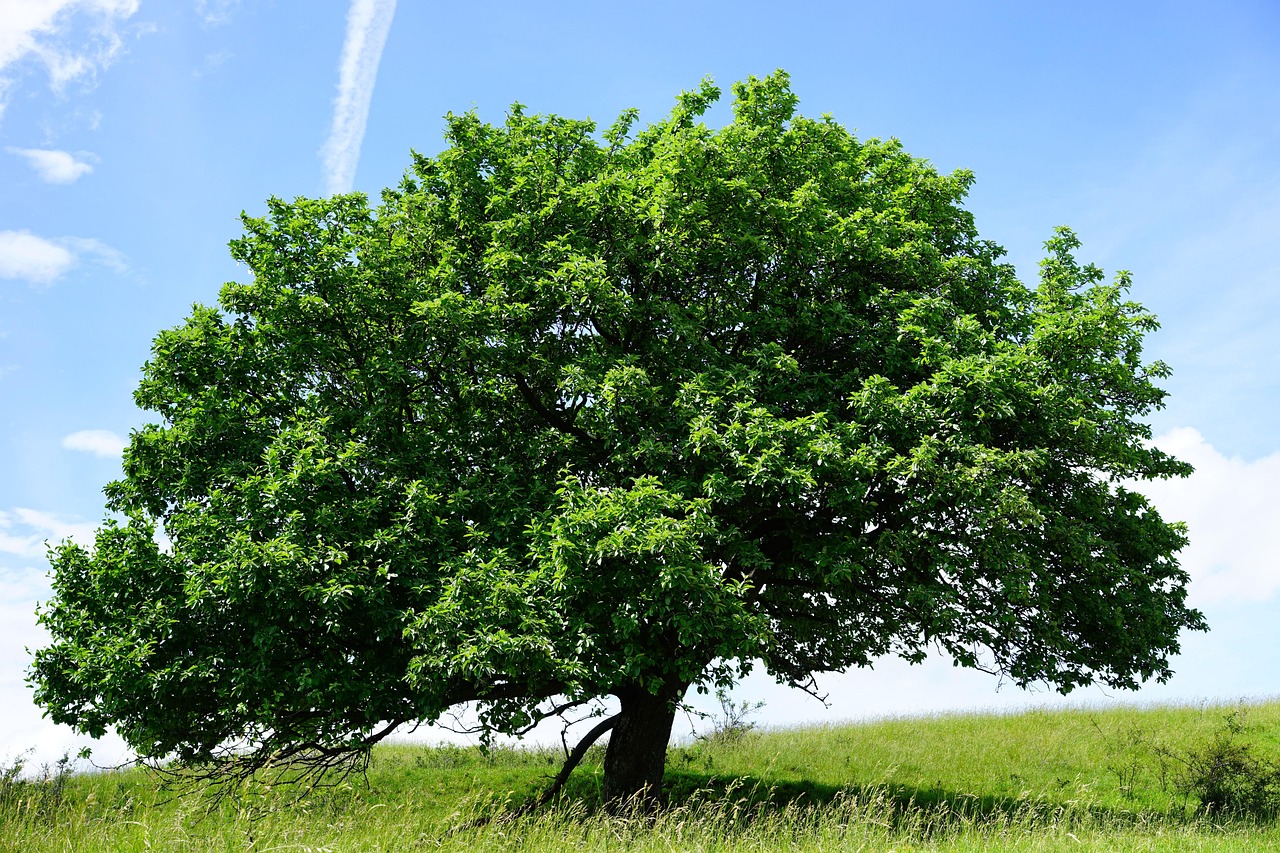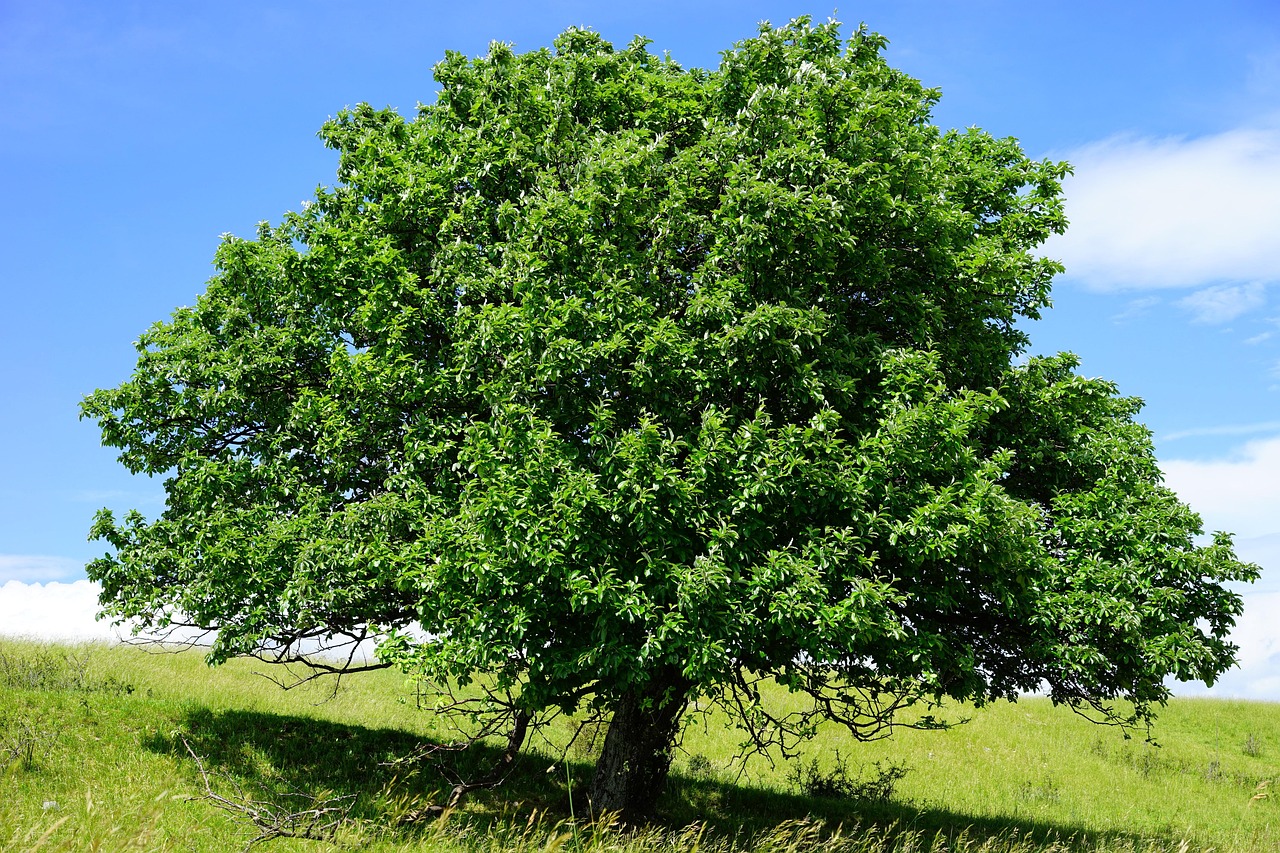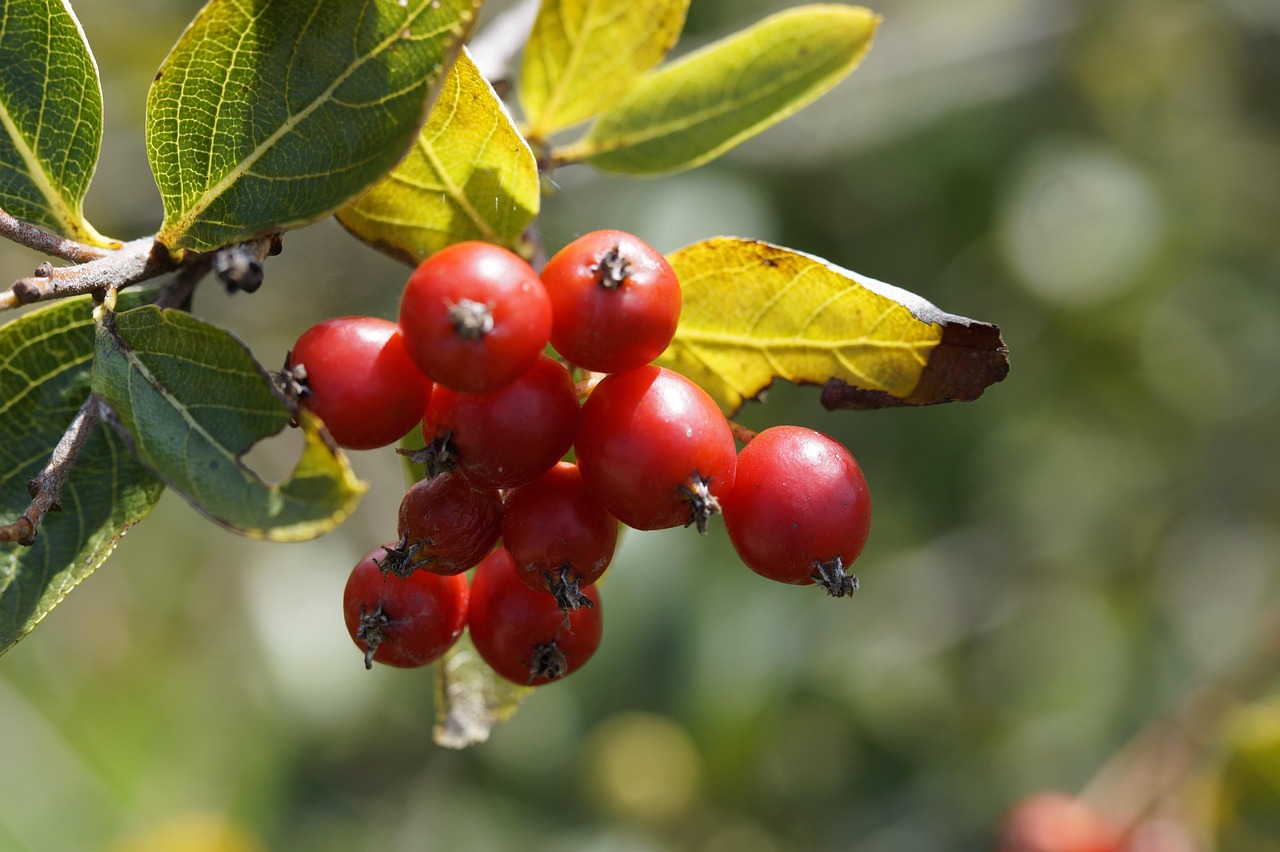The Whitebeam tree, known for its attractive foliage and interesting structure, typically exhibits a moderate growth rate of about 12 to 24 inches per year. This growth rate contributes significantly to its appeal during the winter months when its unique characteristics are more visible.
Understanding the Whitebeam Tree
The Whitebeam tree (Sorbus aria) is a deciduous tree native to Europe and parts of Asia. It is admired for its striking appearance, particularly during the winter months when its bare branches and distinctive bark come into focus. The tree can reach heights between 20 to 50 feet, depending on environmental conditions and care. Its dense crown provides excellent shelter for various birds and wildlife, making it a valuable addition to gardens and parks.

One of the key features of the Whitebeam tree is its adaptability to a range of soil types. It thrives in well-drained soils and can tolerate poor conditions. This resilience makes it a popular choice among landscape designers and gardeners looking to add winter interest to their outdoor spaces.
Growth Rate and Factors Affecting It
The growth rate of the Whitebeam tree can vary based on several factors, including soil quality, moisture levels, and sunlight exposure. On average, you can expect the following growth rates:
| Condition | Growth Rate (inches/year) |
|---|---|
| Optimal Conditions | 24 |
| Moderate Conditions | 12 |
| Poor Conditions | 6 |
In optimal conditions, characterized by rich, well-drained soil and ample sunlight, the Whitebeam can achieve its maximum growth rate of up to 24 inches per year. Conversely, in less favorable environments, such as compacted or nutrient-deficient soil, the growth may slow down to as little as 6 inches annually.

Additionally, the Whitebeam tree displays remarkable resilience during winter. Its ability to retain some leaves through autumn allows for visual interest even when most trees are bare. The leaves are typically oval-shaped with a serrated edge and can display beautiful autumn colors before falling off. This seasonal transformation contributes to its appeal during the colder months.
Winter Interest in the Landscape
In winter, the Whitebeam tree stands out due to its structural form and textured bark. The smooth, grayish bark becomes more pronounced without leaves, creating a striking contrast against the often gray winter skies. The branches provide an interesting architectural feature that can enhance the visual dynamics of a garden or landscape.
Moreover, Whitebeam trees produce clusters of small white flowers in late spring, followed by red berries in late summer. These berries are not only attractive but also serve as a food source for various birds during winter. The combination of these features ensures that the Whitebeam tree remains a focal point throughout the seasons.

Care Requirements for Optimal Growth
To achieve the best growth rate and maintain its aesthetic appeal, proper care is essential. Here are some key care tips:
- Soil: Ensure well-drained soil rich in organic matter.
- Watering: Regular watering is crucial during dry spells, especially in the first few years after planting.
- Pruning: Prune during dormancy to maintain shape and remove any dead or damaged branches.
- Fertilization: Apply a balanced fertilizer in early spring for optimal growth.
By paying attention to these requirements, gardeners can enjoy a healthy Whitebeam tree that offers beauty and interest throughout the winter months. Its moderate growth rate enables it to establish itself quickly while still allowing for manageable maintenance.
The Whitebeam tree not only beautifies landscapes but also supports local wildlife. Understanding its growth dynamics helps gardeners make informed choices about where to plant and how to care for this remarkable tree.
Ecological Benefits of the Whitebeam Tree
The Whitebeam tree offers numerous ecological benefits that extend beyond its aesthetic appeal. By planting this tree, gardeners can contribute to biodiversity in their local ecosystems. The tree serves as a habitat for various wildlife species and plays a role in maintaining ecological balance.

One of the most significant ecological roles of the Whitebeam tree is its capacity to provide shelter and food for birds and insects. The flowers produced by the tree are an essential nectar source for pollinators, while the berries are a food source for various birds during winter. This makes it a critical component of the food web in its habitat.
Supporting Wildlife
Here are some ways in which the Whitebeam tree supports local wildlife:
- Bird Habitats: Many bird species, including thrushes and blackbirds, are attracted to the berries produced by the Whitebeam. This makes it a vital food source during winter months when other food options are scarce.
- Insect Attraction: The flowers of the Whitebeam tree attract a variety of pollinators, including bees and butterflies, which are essential for plant reproduction.
- Natural Shelter: The dense foliage provides cover for various small mammals and birds, offering them safety from predators.
Ideal Locations for Planting Whitebeam Trees
Selecting the right location for planting a Whitebeam tree is crucial for its growth and overall health. The tree thrives in specific conditions that enhance its growth rate and support its winter interest characteristics.
When considering where to plant a Whitebeam tree, here are some important factors to keep in mind:
- Sunlight: Whitebeam trees prefer full sun to partial shade. Ideally, they should receive at least six hours of direct sunlight each day to encourage optimal growth.
- Soil Quality: As mentioned earlier, well-drained soil rich in organic matter is essential. Soil that retains too much moisture can hinder growth and lead to root rot.
- Space: Ensure there is sufficient space for the tree to grow both upward and outward. This allows for proper air circulation and reduces the risk of disease.
Recommended Planting Areas
The following areas are ideal for planting Whitebeam trees:
- Gardens: Home gardens can benefit from the addition of a Whitebeam tree, providing beauty and attracting wildlife.
- Parks: Public parks can enhance biodiversity by incorporating native trees like the Whitebeam into their landscapes.
- Woodland Edges: Planting on the edges of woodlands can help support local wildlife while adding visual interest.
Cultivation Techniques for Enhanced Growth
To maximize the growth rate of your Whitebeam tree, certain cultivation techniques can be employed. These methods focus on creating optimal conditions for growth and supporting the tree as it matures.
Some effective cultivation techniques include:
- Mulching: Applying a layer of mulch around the base of the tree can help retain moisture, suppress weeds, and improve soil quality as it decomposes.
- Aeration: Regularly aerating the soil can promote healthy root development by allowing air and nutrients to penetrate more effectively.
- Pest Management: Keep an eye out for common pests such as aphids or scale insects. Implementing integrated pest management strategies can help control these issues without harming beneficial insects.
By following these cultivation techniques, gardeners can ensure that their Whitebeam trees not only grow at an optimal rate but also thrive throughout their lifespan. This proactive approach will lead to healthier trees that provide lasting beauty and ecological benefits.
Cultural Significance of the Whitebeam Tree
The Whitebeam tree holds cultural significance in various regions, often symbolizing resilience and strength. Its presence in folklore and traditional practices highlights its importance beyond mere aesthetics.
In some cultures, the Whitebeam is associated with protection and safety. Its robust structure has made it a symbol of sanctuary within community spaces. Additionally, the tree’s role in traditional medicine has been recognized for centuries, with parts of the tree used to create herbal remedies.
Folklore and Traditions
The following points illustrate the cultural relevance of the Whitebeam tree:
- Folklore: In certain traditions, Whitebeam trees are believed to ward off evil spirits, making them favorable choices for planting near homes.
- Ceremonial Uses: The wood from the Whitebeam has been used in crafting ceremonial items and tools due to its durability.
- Artistic Representation: The tree’s unique shape and seasonal changes have inspired artists and poets through history, celebrating nature’s beauty.
Whitebeam Tree Varieties and Their Differences
While the common Whitebeam tree (Sorbus aria) is widely recognized, several other varieties exist, each with distinct characteristics and growth patterns. Understanding these differences can help gardeners choose the best type for their specific landscape needs and preferences.
Types of Whitebeam Trees
Here are some notable varieties of Whitebeam trees:
- Common Whitebeam (Sorbus aria): This variety is known for its broad, rounded canopy and attractive foliage. It is commonly found in parks and gardens.
- Rowan or Mountain Ash (Sorbus aucuparia): Although often referred to as a Whitebeam, this species has more elongated leaves and produces bright orange berries. It is a preferred choice for attracting birds and wildlife.
- Heartleaf Whitebeam (Sorbus domestica): This variety features heart-shaped leaves and is valued for its ornamental qualities. It grows slower than other types but offers excellent winter interest.
Growth Rate Comparison
Here is a comparison of the growth rates among these different varieties:
| Variety | Growth Rate (inches/year) | Maximum Height (feet) |
|---|---|---|
| Common Whitebeam | 12-24 | 20-50 |
| Rowan | 12-18 | 30-40 |
| Heartleaf Whitebeam | 6-12 | 15-30 |
This table shows that the Common Whitebeam generally has the highest growth rate, making it an excellent choice for gardeners looking for quick establishment. In contrast, the Heartleaf Whitebeam grows more slowly but offers unique aesthetics.
Seasonal Changes and Winter Interest
The appeal of the Whitebeam tree extends beyond its initial growth. Its seasonal changes offer visual interest throughout the year, particularly in winter when many trees are bare.
Winter Characteristics
During winter, the following features make the Whitebeam tree stand out:
- Bark Texture: The smooth, grayish bark becomes more pronounced in winter, providing a striking visual against the stark landscape.
- Branch Structure: Without leaves, the intricate branching patterns create an interesting silhouette against the winter sky.
- Berries: If left unharvested, the red berries can persist into winter, attracting birds and adding color to the otherwise drab scenery.
Caring for Whitebeam Trees in Winter
Caring for Whitebeam trees during winter is essential to ensure their health and vitality as they prepare for the next growing season. Here are some tips for winter care:
- Watering: While trees generally require less water in winter, it is crucial to ensure they have adequate moisture during dry spells. Watering during warmer winter days can prevent dehydration.
- Mulching: Applying mulch around the base can help insulate the roots from freezing temperatures and retain soil moisture.
- Pest Inspection: Regularly check for signs of pests or disease. Winter can be a time when certain pests seek shelter on trees.
- Pruning: Avoid heavy pruning during winter. However, removing any dead or damaged branches can help prevent further issues in spring.
Signs of Healthy Winter Trees
A healthy Whitebeam tree in winter should exhibit specific signs, including:
- Smooth Bark: Healthy trees have intact bark without cracks or peeling.
- No Excessive Drooping: Branches should maintain their structure without excessive drooping or breakage.
- Leaf Buds: Look for well-developed buds on branches, indicating readiness for spring growth.
Caring for your Whitebeam tree during winter ensures that it emerges strong in the spring, ready to grow and flourish. By monitoring its health and providing necessary care, gardeners can enjoy the beauty and benefits of this remarkable tree throughout the seasons.
Using Whitebeam Trees in Landscape Design
The versatility of the Whitebeam tree makes it an excellent choice in landscape design. Its unique characteristics allow it to fit seamlessly into various garden themes and styles.
Design Ideas
Here are some creative ways to incorporate Whitebeam trees into your landscape:
- Focal Points: Planting a mature Whitebeam tree can create a stunning focal point in a garden or park area.
- Natural Screens: Use multiple trees to form a natural screen or hedge, providing privacy while enhancing biodiversity.
- Wildlife Gardens: Create a wildlife-friendly space by including Whitebeam trees alongside flowering plants and shrubs that attract pollinators.
- Aesthetic Pathways: Line pathways with young Whitebeam trees to create a beautiful tree-lined effect that encourages exploration.
The adaptability and resilience of Whitebeam trees not only enhance landscape beauty but also promote environmental sustainability by supporting local wildlife.
Enhancing Your Landscape with Whitebeam Trees
In addition to their aesthetic value, Whitebeam trees provide various environmental benefits that can enhance any landscape. Their ability to adapt to different soil types and conditions makes them suitable for various planting scenarios. Whether used in residential gardens, public parks, or commercial landscapes, these trees can thrive and contribute positively to their environment.
Seasonal Considerations in Landscape Design
When planning your landscape design, it is essential to consider how Whitebeam trees will look throughout different seasons:
- Spring: In spring, the Whitebeam tree blooms with white flowers that attract pollinators, adding a burst of life to the landscape.
- Summer: During summer, the lush green leaves provide shade, making areas beneath the tree comfortable and inviting.
- Autumn: In autumn, the leaves turn vibrant shades of yellow and orange, creating a stunning display before falling.
- Winter: In winter, the tree’s unique structure and berries create visual interest, while its bare branches add character to the snowy landscape.
Combining Whitebeam with Other Plants
The versatility of Whitebeam trees allows them to coexist beautifully with various plants. Here are some companion planting ideas:
- Flowering Shrubs: Pair Whitebeam trees with flowering shrubs like lilacs or hydrangeas to create a colorful and fragrant garden.
- Ground Covers: Use low-growing ground covers such as creeping thyme or sedum at the base of the tree to prevent weed growth and retain moisture.
- Evergreens: Combine Whitebeam trees with evergreen species like junipers or pines for year-round greenery and contrast in texture.
Maintenance Tips for Longevity
To ensure that your Whitebeam trees remain healthy and vibrant throughout their lifespan, regular maintenance is key. Here are some maintenance tips:
- Regular Inspections: Check for signs of disease or pest infestations regularly. Early detection is crucial for effective management.
- Watering Schedule: Establish a consistent watering schedule during dry periods, especially in the first few years after planting.
- Seasonal Pruning: While heavy pruning should be avoided during winter, light pruning can be beneficial in late winter or early spring to encourage healthy growth.
Final Thoughts
The Whitebeam tree is an exceptional choice for anyone looking to enhance their landscape with a tree that offers both beauty and ecological benefits. Its moderate growth rate allows it to establish itself quickly while providing year-round interest, particularly in winter. By understanding its unique characteristics and care requirements, gardeners can create stunning and sustainable outdoor spaces.
The adaptability of the Whitebeam tree ensures its compatibility with various soil types and conditions. Whether planted as a focal point or as part of a larger wildlife garden, its presence can significantly improve biodiversity. Additionally, its cultural significance adds depth to its value, making it more than just a decorative element.
Ultimately, incorporating Whitebeam trees into your landscape design not only enhances visual appeal but also supports local wildlife and promotes environmental sustainability. As you plan your garden or outdoor space, consider the many advantages this remarkable tree has to offer, ensuring that it becomes a cherished part of your landscape for years to come.
